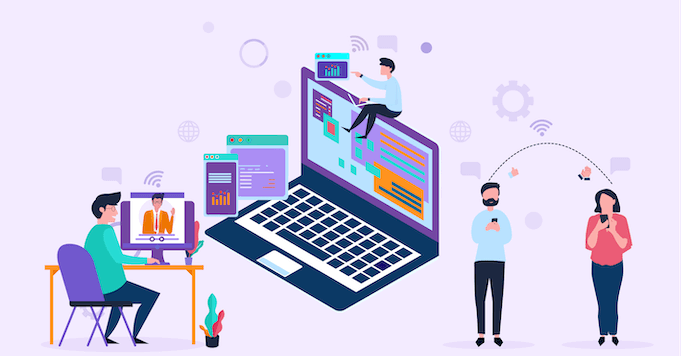As the business world continues to change at a rapid pace, technology has taken center stage: revolutionizing how companies manage their employees. By automating administrative tasks and utilizing data for well-informed decision-making, the use of technology in managing the workforce has become transformative. This article explores the significant influence of technology on modern workforce management, emphasizing crucial innovations and their effects.
1. The Digital Shift in Workforce Management
In the past, workforce management typically involved labor-intensive manual processes like keeping paper-based records, monitoring attendance, and handling payroll. With the introduction of Human Resources Information Systems (HRIS), these practices were transformed. HRIS platforms offer an all-inclusive set of tools that automate administrative tasks including payroll processing, benefits management, and employee data organization. This not only minimizes error risks but also allows HR staff to concentrate on strategic projects that promote organizational growth.
2. Data-Driven Decision-Making
One of the most noteworthy contributions technology has made to workforce management is enabling organizations to collect, evaluate, and interpret vast amounts of data for informed decision-making. Software for workforce planning and analytic tools allow companies to acquire data related to employee performance, engagement, retention, and more. Armed with this knowledge, HR experts and company leaders can identify trends, predict workforce requirements, and devise strategies that align with long-term business objectives.
3. Talent Acquisition and Recruitment
The adoption of technology has reshaped talent acquisition by making it more efficient and targeted. Through online job boards, professional networking sites, and applicant tracking systems, the recruitment process has been streamlined – helping organizations reach a broader group of potential candidates while pinpointing those with relevant skills and experience. Furthermore, Artificial Intelligence (AI) is being utilized to analyze resumes in comparison to job descriptions – saving time and improving the precision of candidate screening.
4. Remote Work and Collaboration Tools
The rise of remote work has been accelerated by technology, offering employees greater flexibility and organizations the opportunity to tap into a global talent pool. Collaboration tools like video conferencing, project management software, and instant messaging platforms facilitate seamless communication and coordination among remote teams. However, effective remote workforce management requires robust policies, performance tracking mechanisms, and a focus on maintaining team cohesion despite physical distance.
5. Performance Management and Employee Engagement
Technology-driven performance management tools and time clock software have shifted the paradigm from annual performance reviews to continuous feedback and development. Mobile apps and software platforms enable real-time feedback, goal tracking, and personalized learning experiences for employees. Moreover, engagement platforms utilize surveys and sentiment analysis to gauge employee satisfaction and identify areas for improvement. This technology-driven approach fosters a culture of ongoing learning, growth, and active engagement within the workforce.
6. Predictive Analytics and Workforce Planning
Predictive analytics leverages historical data to forecast future workforce trends, enabling organizations to proactively address talent gaps and succession planning. By identifying high-potential employees, predicting turnover rates, and assessing skills requirements, organizations can make strategic decisions to ensure a steady pipeline of skilled professionals and reduce disruptions caused by workforce imbalances.
7. Ethical Considerations and Data Privacy
While technology offers numerous benefits to workforce management, it also raises ethical concerns around data privacy and security. Organizations must ensure that employee data is handled responsibly and in compliance with regulations such as GDPR (General Data Protection Regulation). Transparent communication about data usage and implementing robust cybersecurity measures are crucial to maintain employee trust and protect sensitive information.
In conclusion, technology’s impact on modern workforce management cannot be overstated. The integration of HRIS, data analytics, AI, and collaboration tools has revolutionized how organizations handle administrative tasks, make informed decisions, and engage with their workforce. As technology continues to evolve, the future promises even more sophisticated solutions that will further enhance workforce management practices. However, it’s essential for organizations to strike a balance between harnessing the benefits of technology and upholding ethical standards, ensuring that their workforce management practices remain human-centered, efficient, and aligned with their core values.






